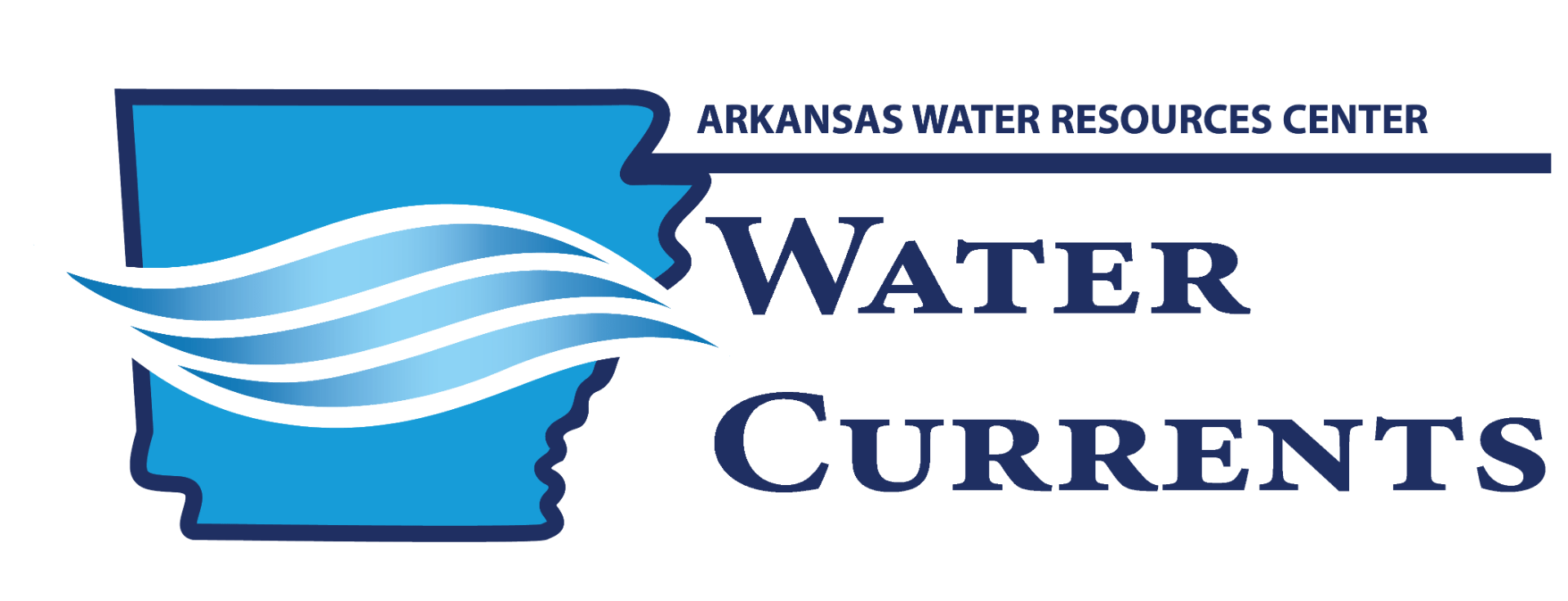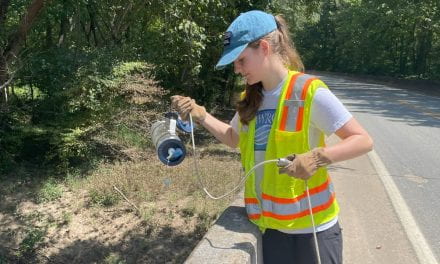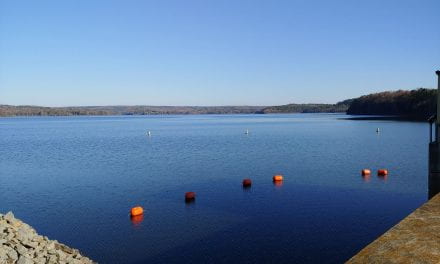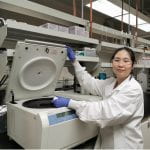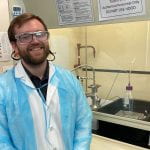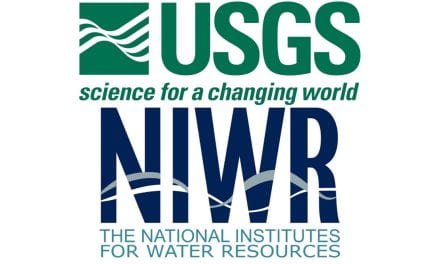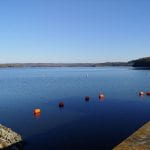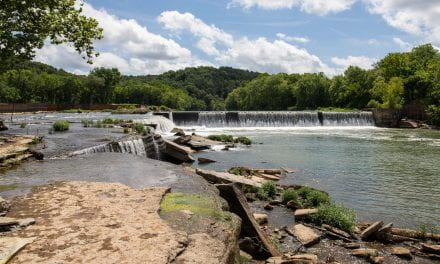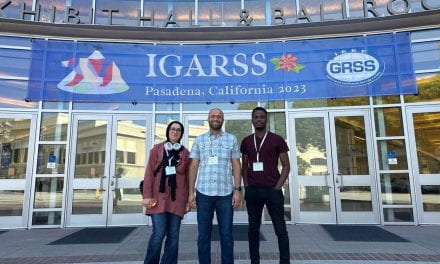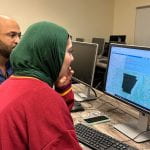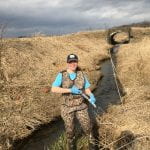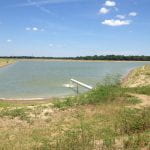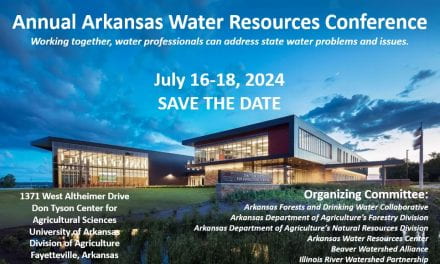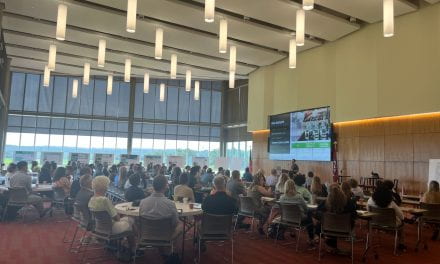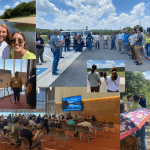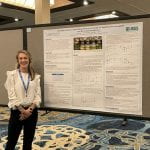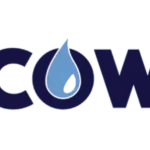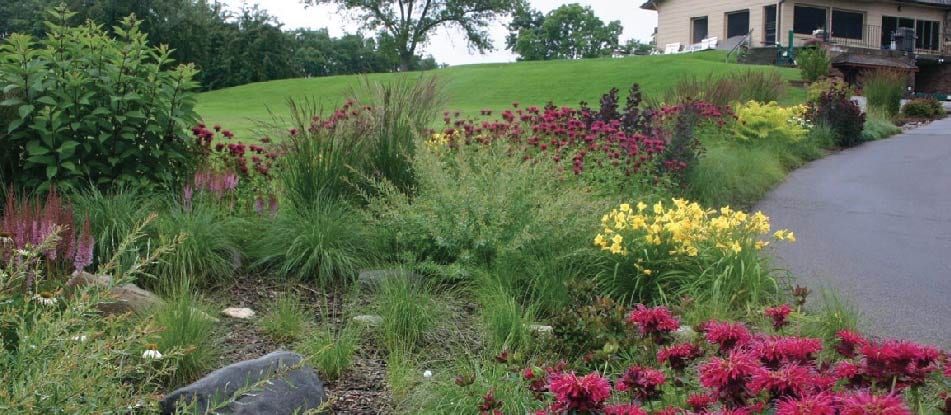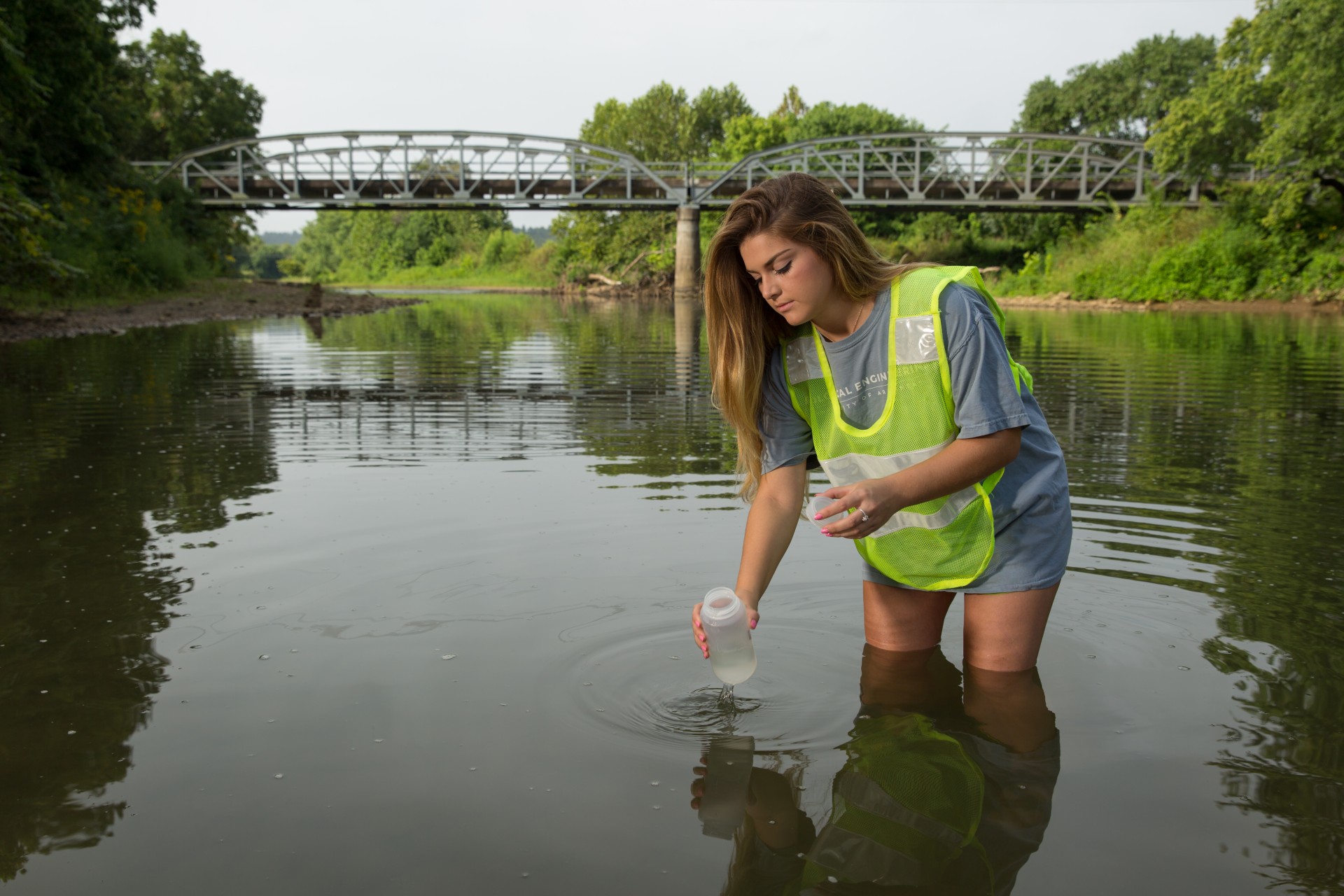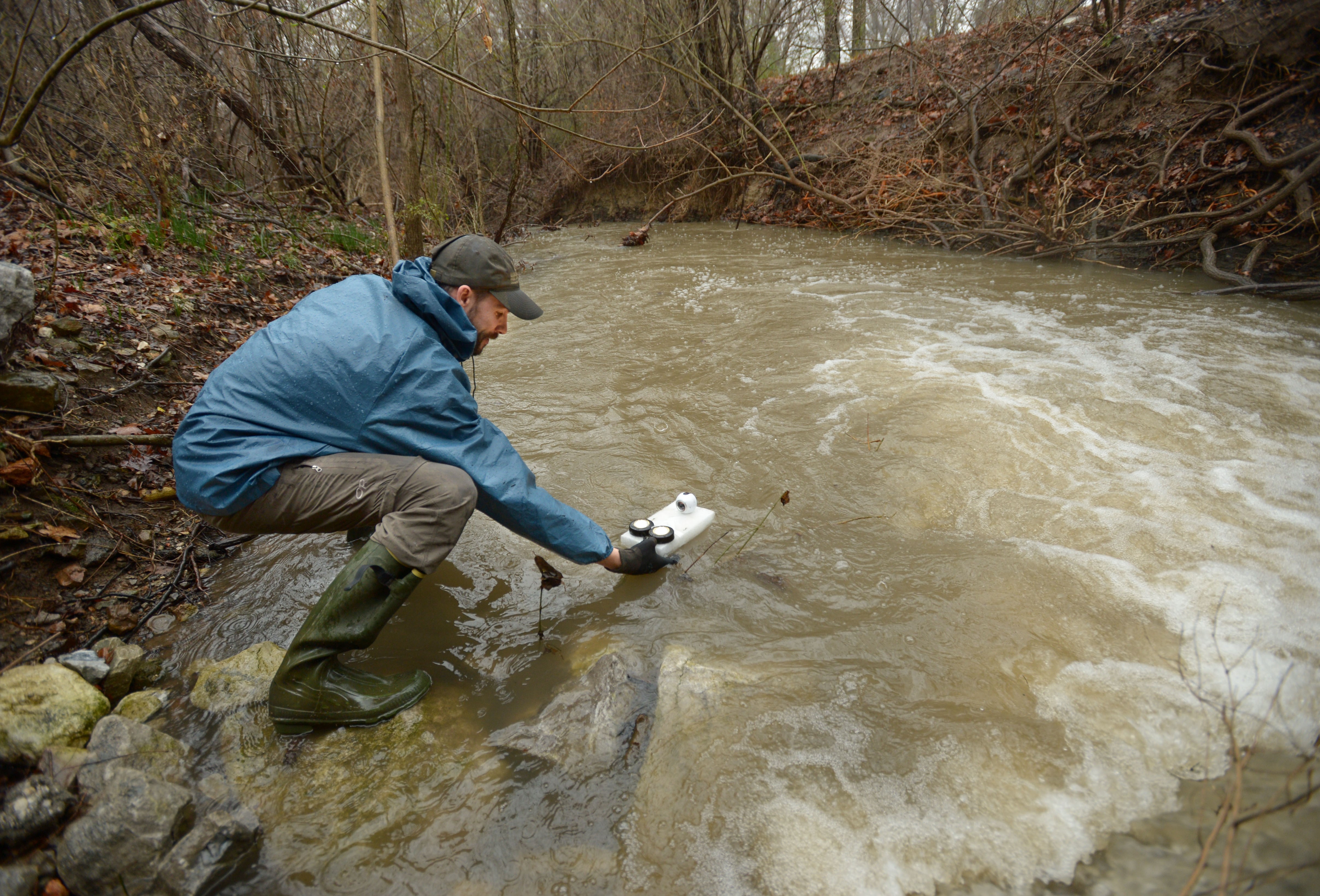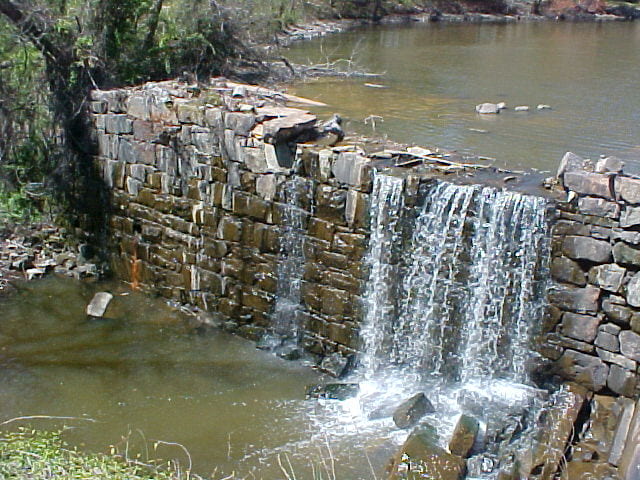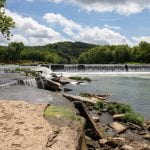
Researchers Overcome Obstacles to Collect Valuable Water-Quality Information
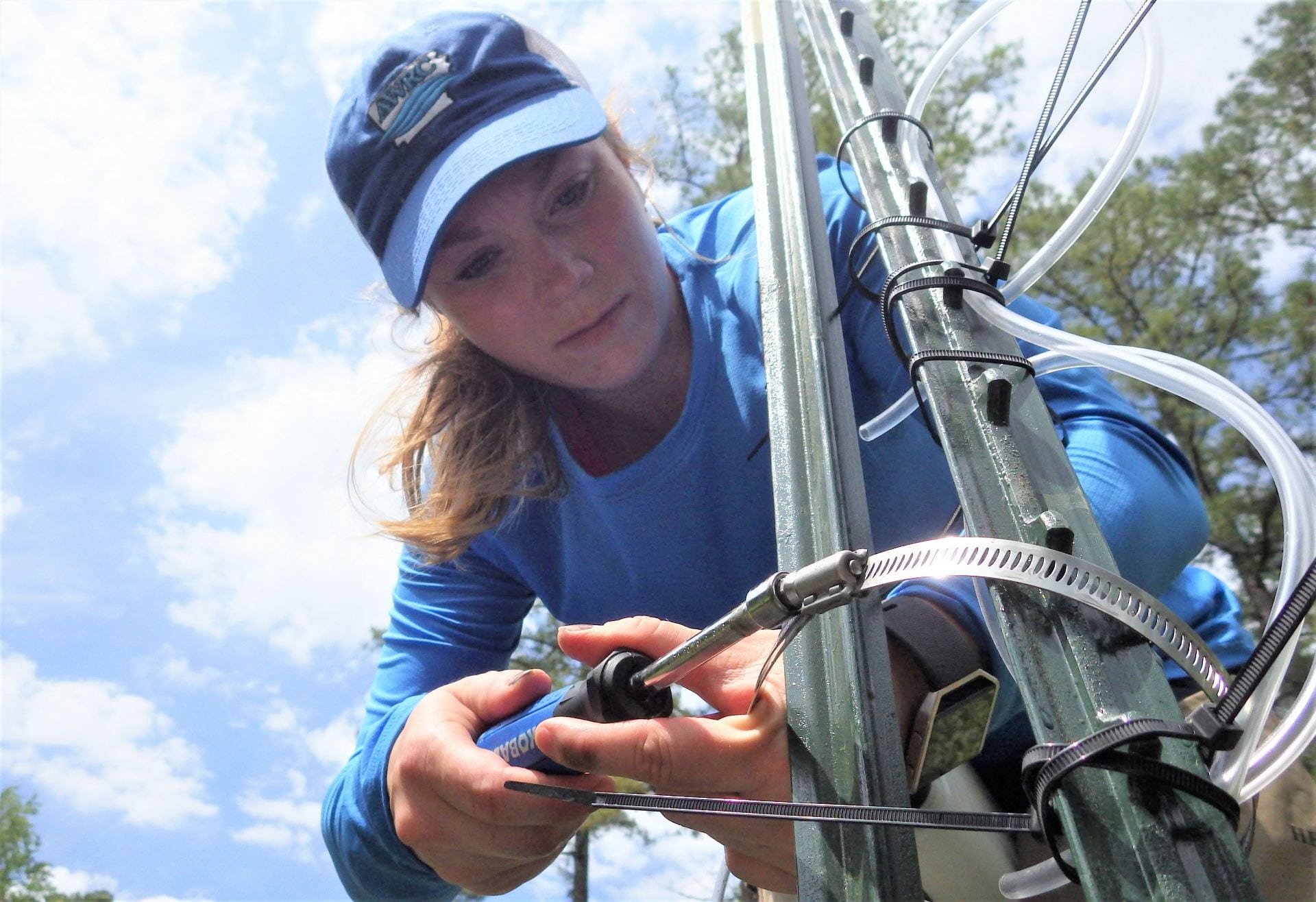
An ongoing project by researchers at the University of Arkansas could improve how subwatersheds are prioritized for management activities. Abbie Lasater, a PhD student in Biological and Agricultural Engineering, and Dr. Brad Austin, a post-doctoral research associate with the Arkansas Water Resources Center (AWRC), are developing methods to monitor water quality at finer spatial scales and cheaper than typical approaches. Their research is being done under the guidance of AWRC director Dr. Brian Haggard.
Discharge measurements are critical for calculating nutrient and sediment loads to waterbodies like rivers and lakes, as well as developing water-quality models like SWAT (Soil and Water Assessment Tool). SWAT models can be used to prioritize subwatersheds (smaller areas in a large watershed) where best management practices could be used to improve land and water quality.
While the U.S. Geological Survey (USGS) has a long history of collecting discharge data at stream sites across the country, these stations can cost at least $25,000 to install and $15,000 every year for maintenance. USGS stations are also typically on larger rivers, or wherever their partners need them. The challenge is, we have discharge information at the large scale, but want to implement management activities at the small scale to improve water quality.
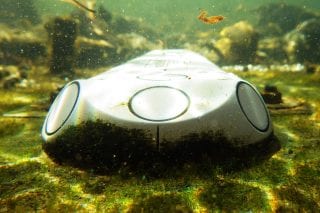
SonTek discharge meter in stream.
Lasater and Austin are developing their own network of discharge monitoring stations in the Upper Poteau River Watershed in western Arkansas. “To measure discharge at these sites, we are using a SonTek acoustic Doppler instrument that we install in the stream channel,” says Lasater. “That may sound easy, but we have definitely run into some challenges working in these natural streams and creeks,” she added.
They have to first install a concrete base into the stream that they can attach the SonTek to. Then they have to run PVC pipe from the base up the side of the stream channel and to a tree. This is where the power and data cords run from the SonTek to the battery and the place where they can connect a computer to download all the discharge data collected over time. This has to be high enough up to avoid getting submerged during storms.
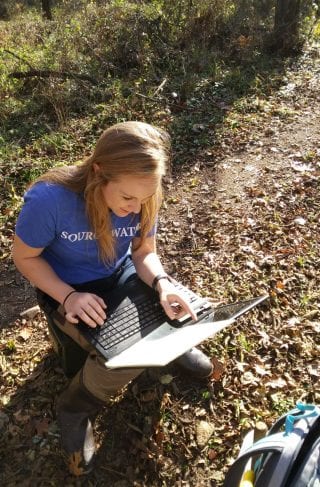
Abbie Lasater does a software check for the SonTek discharge meter.
“It’s not easy setting up the SonTek at some of these sites,” says Austin. “We have to make sure that our equipment is secure enough that it won’t get washed away during storms and high flows.” He says that it can be hard to find a good place to put the SonTek, given uneven stream channels and streambed characteristics. They have even had to drill directly into bedrock to act as the base for the SonTek at one of the sites. “Despite the challenges of setting up the site, once that’s done, it’s easy to move the SonTek around from stream to stream.”
“What’s really cool about this project is that we are able to generate our own discharge data at a lot of sites,” says Lasater. “And we get to monitor at smaller spatial scales. It’s exciting that the work we are doing will help improve water quality in the Poteau River Watershed.”
This project is in the second of three years of funding from the Arkansas Natural Resources Commission. For more information about this work, visit our website at https://arkansas-water-center.uark.edu/research/poteau-river-watershed-water-quality-monitoring-ar.php.
